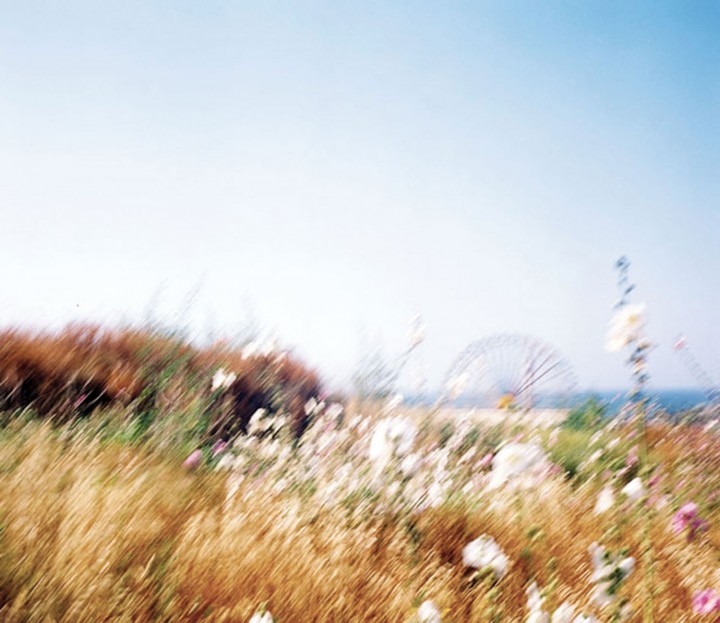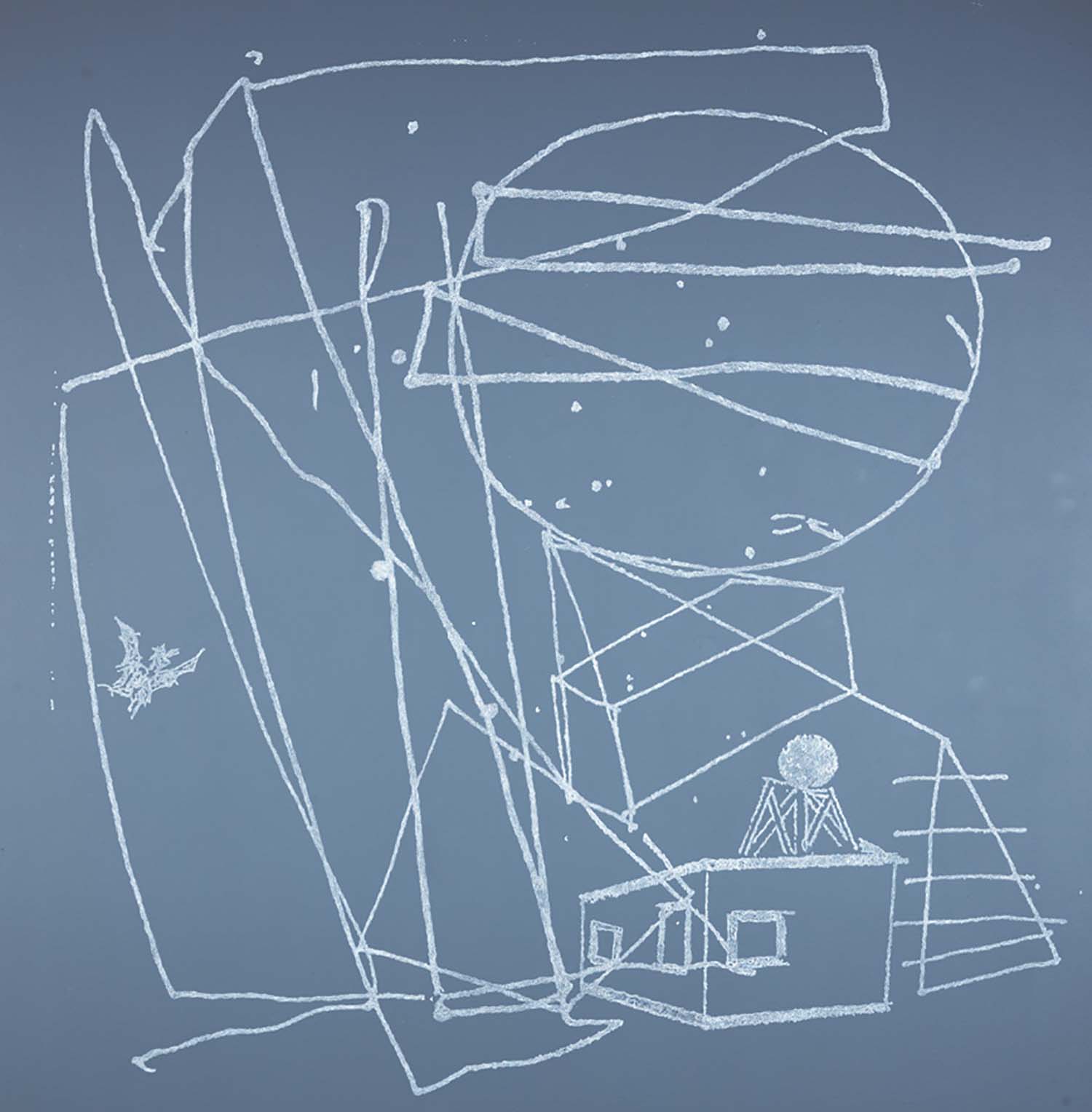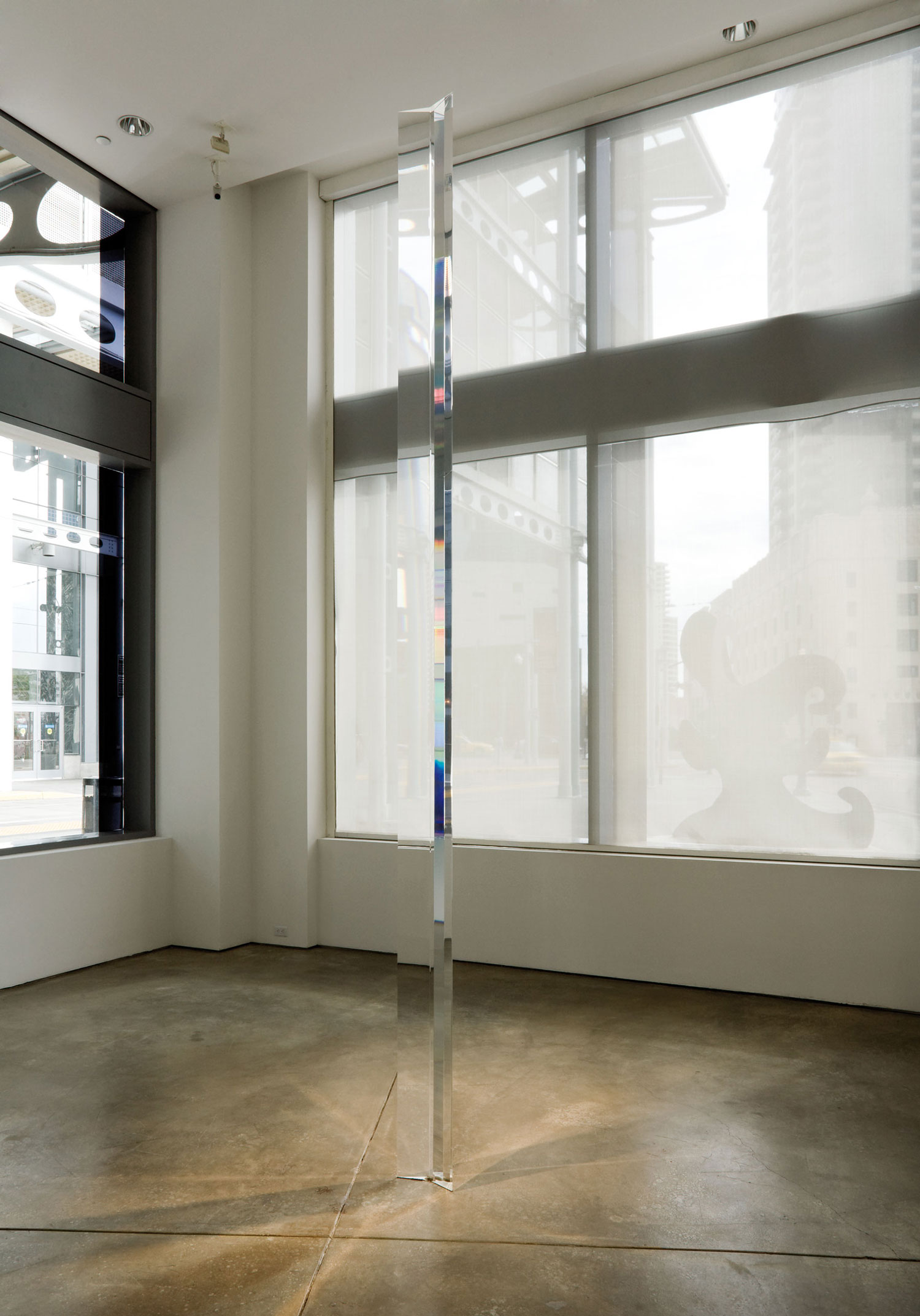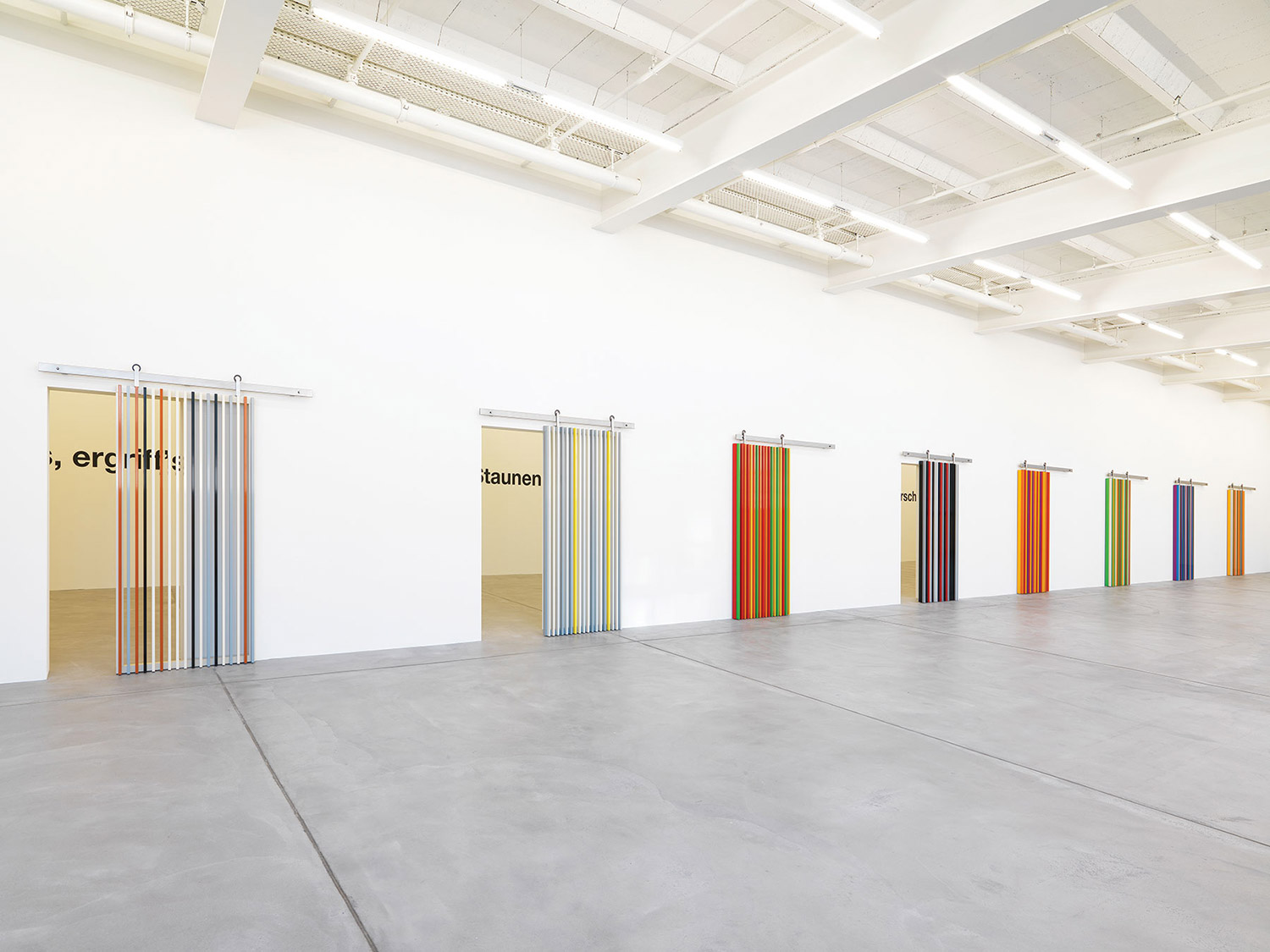Flash Art Asia delves into the Asian contemporary art phenomenon that has exploded on the international art scene. In its third edition, this survey sheds light on a selection of the leading curators, museums, galleries and collectors from India to the UAE, China to Indonesia.

Curators / Critics
1) What do you think are some of the differences between the contemporary art of your country and that of Asia in general or the West?
2) In your country do you think there is adequate information about contemporary art? Do the museums and private galleries do a good job of disseminating information?
3) What is the role of the art critic and curator in Asia? Do you have sufficient autonomy, or is it the galleries that make the choices and affirm the status of the artist?
4) Do private galleries and museums frequently ask for your collaboration?
Chang Tsong-Zung
Curator and Critic, China
1) China has been more devoted to the project of modernity than most Asian nations, and its cultural transformation has been more radical than most. We all see how most Asian nations have adapted to modernity’s blatant logic of production, but China has also aimed to make a radical civilizational shift, and has attempted to radicalize its traditional universalist pursuits of equality and the ethical society. The disillusionment of society after the failure of this grand and brutal experiment has never gone away. By turning the modernist dream into production per se, in the footsteps of America, leads the nation into spiraling social conflicts. This bipolar cultural schizophrenia is a strong dynamic driving cultural creativity; it has encouraged new utopian thinking, which is the most important contribution art can make under such circumstance. Other Asian nations also suffer this bipolar schizophrenia, as evidenced by the lingering shadows of the Cold War that brews internal antagonism. By internal here I mean the splitting of nations under the Cold War. Comparative historical experience is the best approach to illuminating historical problems, which is why I believe Asian art should be a top priority. Creativity that gets generated by this inter-Asian dynamic will not be a regional achievement; it will have significance for every one of us who has experienced (or remember the experience of) the traumas of the 20th century.
2) There can never be adequate information on contemporary art. The beauty of contemporary art is that it can be free of the baggage of historical interpretation; at a certain level, contemporary art should always try to remain open for interpretation by people at street level.
3) The serious curator is on the same front line as the artist. He is a strategist, a schemer and a dreamer. Any institution that offers opportunities to further a curator’s project is a good institution.
4) Yes, regularly.
Sunjung Kim
Curator and Critic, Korea
1) I don’t think it is useful to divide the art scene geographically in speaking about the contemporary art scene in Korea. As many artists and curators regularly travel and study abroad, and some are even based outside of Korea, I think there is much common ground among art scenes. If there is a particular characteristic of contemporary art in Korea, I have noticed great interest in rethinking forgotten or erased histories. This is no doubt due to the fact that the art scene in Korea developed as rapidly alongside the nation’s social, economic and political developments.
2) In contemporary society and especially in South Korea, where we are inundated with so much information, rather than just making information about contemporary art available, I think it is more important to examine how such information is disseminated and to work towards creative ways for making information relevant and interesting for both specialized and general audiences. My efforts have included organizing the “Backyard Camp” for university students during the opening week of the Gwangju Biennale, and my support of the artist Jun Yang’s DAM project. If there are interesting issues, it is easy to gather a lot of information. If the importance of information was an idea of the 19th century, then examining how information travels and considering its effects may be the preoccupation of the 21st.
3) My role in Korea did not involve any gallery-related activities. However, when I worked for state-funded projects, I found there were some interruptions or guidelines that were imposed for specific projects. I think it may be analogous to US Abstract Expressionist exhibitions held in Europe and Japan in the ’60s. The government asks curators and artists to make national presentations, and I find these activities problematic.
4) I have worked with private museums to curate exhibitions but not with commercial galleries.
Museums
1) How is your museum funded?
2) What is the orientation of your museum toward presenting contemporary art? Do you focus on Asian art, or do you have space reserved for important European and American art too?
3) Regarding acquisitions, do you purchase artworks directly from artists or through galleries and auction houses?
4) Do you have an annual budget for acquisitions and a separate one for exhibitions?
5) Who determines acquisitions? Do you have a museum board?
Lars Nittve
Executive Director, M+, Hong Kong
1) M+ is part of the West Kowloon Cultural District development that was directly financed with an overall upfront endowment of HKD21.6 billion by the Hong Kong government for construction and operation.
2) M+ is committed to acquiring and promoting 20th- and 21st-century art, design, architecture and the moving image from a Hong Kong core, expanding to China, Asia and the rest of the world. It is important to place the achievements of Hong Kong artists in the context of wider international developments. A vital step enabling this was the recent acquisition of the Sigg Collection, giving Hong Kong the most comprehensive and important collection of Chinese contemporary art, and positioning us to better secure the best art from Hong Kong and overseas for exhibition and collection. M+ is also regenerating what a museum is, as it charts the largely undocumented unique histories, practices and often cross-disciplinary practitioners in visual culture in Asia. Ultimately it is about excellence and access, vitally connecting international art scenes as well as being at its core a place for the people in Hong Kong.
3) We look for the best artworks to fit our collection mainly via donations, galleries and consultants
4) We have a separate budget for exhibitions and currently a total acquisitions budget of about US180 million.
5) The final decision depends on the fair market value of the individual work — it is either the Executive Director, the Acquisitions Committee, the Museum Committee or the WKCDA Board (the latter is for acquisitions over HKD50 million).
Yuji Akimoto
Director of 21st Century Museum of Contemporary Art, Kanazawa, Japan
1) Kanazawa Art Promotion and Development Foundation is appointed by the City of Kanazawa to operate the Museum. The Museum is run by subsidies from the City.
2) Our aim is to be a museum that moves in step with contemporary society, to create a participation-oriented museum, to be an art museum open to the world where regional traditional arts connect with the future, and lastly, to grow in spirit along with children. Our acquisitions must be works produced after 1980, that provide points of reference in terms of art history since 1900 and that are closely associated with the Kanazawa area. We not only collect works from Europe and United States but also from Asia, South America, Middle-East, Africa and other regions of the world. Recently we are focusing more on East Asia.
3) We purchase according to the Japanese acquisition rules of public museums in this country. We do not purchase from auction houses but deal directly with artists or galleries.
4) Yes, we have a separate budget.
5) The acquisition board, which consists of outside specialists, evaluates the proposal from the Museum, which is then approved by the City Mayor.
Biennials
1) At a time of multiplying art biennials (there are over 180 in the world), many of which are rather similar, what do you think will characterize and distinguish your biennial?
2) At a time of economic crisis, have you had trouble sourcing funds? Is your budget determined by state institutions or does it come from private sponsorship?
3) Looking at the international scene, what other biennials act as a reference for you?
Bose Krishnamachari & Riyas Komu
Co-founders, Kochi-Muziris Biennale
1) The Kochi-Muziris Biennale will be the largest contemporary public art event in the country, and is a first for India in terms of scale and ambition. The project will showcase artwork created by some of the world’s most engaging artists, both established and emerging, from India and abroad. It aims to create a platform for debate by introducing ambitious contemporary visual art practices and theory to India, showcasing new Indian and international art, and enabling dialogue among the public, artists, curators and local and international visitors. As well as providing an opportunity to elevate Indian art to an international level, the project will increase accessibility to the arts locally. In collaboration with the Kerala Tourism Department and local and national creative industries, the Biennale aims to stimulate national tourism, cultural interest and social cohesion, and to engage with local communities by becoming a catalyst for regeneration and urban development.
2) The project has been fortunate to receive part funding from the state government of India. We aren’t able to give a standalone budget figure, but the remainder of the budget is being funded through investment and support from other institutions in both the public and private sector. The biennale presents a number of opportunities for corporations, both international and regional, to promote their brands across various activities of the event.
3) We visited all the leading biennials in 2010 and 2011. As artists, both Riyas Komu and I had already experienced the values of a biennial, but through these visits we were able to identify elements from each that we found useful when planning the Kochi-Muziris Biennale. Clearly, the Venice Biennale is an important reference point, but we were also highly impressed with the attendance, quality and programming at the São Paolo and Guangzhou biennials.
Dr. Yongwoo Lee
President, Gwangju Biennale Foundation
1) The Gwangju Biennale is the oldest biennial in Asia. There were some other biennials in the ’60s and ’70s in Asia such as the Tokyo Biennale, the India Triennale, which came into being in 1970, and then there was the Bangladesh Biennale, but these were rather unknown. So the Gwangju Biennale is the longest running and oldest biennial in Asia on a global scale. We are hosting the first edition of the World Biennial Forum this year, which is going to be a discussion place for the role of the biennial today. Gwangju is just one of the players in this very large scene.
2) I’ve been hearing a lot about this fiscal austerity in Europe, but Gwangju in a way is pretty lucky. We have been able to collect quite a reasonable amount of funds from different corporations in Korea such as Samsung, LG, Hyundai and Asiana Airlines. So the total amount of the endowment today is about USD28 million dollars. That is seed money; we don’t use it. We get 1.5 million from the Metropolitan City of Gwangju and 2.5 million from the national government of Korea. Then we make another two or three million from entry, then interest is another one or two million and then sponsorship. This year Shinsegae Department Store is a major sponsor. The total budget this year is around 10 million dollars.
3) I go to a lot of biennials such as Venice, Kassel, Sydney, but I really like going to unique, minor biennials. I’m sorry to say “minor,” but it doesn’t mean they are inferior — I mean those in developing countries. I find that they often have a beautiful voice. Venice and Kassel are so big with huge budgets. I understand that there is the Antarctic Biennale, or the Ural Industrial Biennial in Ekaterinburg, Russia, for example. I don’t go just to see the exhibition itself but I try to find the autonomous artistic and cultural voices of the place.
Hoor Al-Qasimi
President, Sharjah Art Foundation
1) Firstly, even though it has not been going on as long as some biennials such as Venice or São Paulo, the Sharjah Biennial does have a history — it has been going on now since 1993 — which makes it one of the oldest cultural events in the Gulf region. This history gives us credibility within the Middle East, and that is important in terms of our reputation with artists and art professionals. And this is in part the result of our long-standing focus on encouraging artists to make new works and to consider the context of Sharjah as they do so. This focus on engagement with the context of Sharjah is something that Yuko Hasegawa is exploring in the upcoming Sharjah Biennial 11.
2) Our primary source of funding is the Sharjah Department of Culture, but we have a growing number of local and international sponsors who are interested in supporting our work. So while we still have to keep a tight reign on our budgets, we are increasingly finding a wider range of individuals, organizations and corporations who want to be involved in our project.
3) Documenta has been a great influence over the years, and I would say that the Istanbul Biennial is another one I find important, perhaps also Gwangju. I try to visit as many as I can — it helps give perspective and it is always interesting to study and reflect on how a particular curatorial vision unfolds. This past year I have traveled to the Sydney Biennale, São Paulo and Shanghai among others.
Galleries
1) At a time of crisis in the international art market, what is the current situation in your country?
2) Is your art market predominantly national or does it include other regions in Asia?
3) Are your collectors primarily interested in local or Western artists?
4) Do you take part in art fairs?
Agnes Lin
Founder of Osage Group, Hong Kong
1) The Hong Kong art market at the moment is definitely exciting! The first edition of Art Basel Hong Kong is coming in June 2013, the M+ Museum is in preparation and many international galleries are opening new branches here. These are all signs of a booming market.
2) Our art market is certainly a global one. Hong Kong is a world-class city. The city itself is very international, and it is the gateway to mainland China, Korea, Taipei, Thailand, India, Singapore, Indonesia, Australia — all the important art markets in the region. The first edition of Art Basel Hong Kong is set out to be a global art fair, drawing galleries from over the Asia-Pacific region and visitors from around the globe. So our art market is not limited to a national or regional one.
3) Our collectors are mostly those with diverse and sophisticated collections or institutions with a global vision. However, our gallery specializes in presenting Asian artists, and we have been working in these regions for the past eight years.
4) Yes. We were the first Hong Kong gallery to be shown in the Art Statements section of Art Basel, Switzerland. This year, we will participate in the Spotlight section of Frieze Masters in Regent’s Park, London. We have also participated in Shanghai, Art HK, Art Taipei, Art Stage Singapore and Art Gwangju.
Yasuko Kaneko
Director of Ota Fine Arts, Tokyo / Singapore
1) Collectors seem indeed concerned about the future of the market, and many of them are observing auction results very closely. At the same time, a lot of local art events and festivals are being held very energetically all over Japan. I think the market might not be so active, but the art scene in Japan is really lively.
2) We just opened a new gallery in the Gillman Barracks art precinct in Singapore. One of the reasons we chose to expand out of Tokyo was that we already had a range of clients from Hong Kong, Indonesia, the Philippines, Singapore, China and South Korea, and we wanted to develop a closer relationship with them. We see Singapore as centrally and strategically positioned among these regions on the cusp of an emerging market.
3) Over the last few years, one of our central goals has been to highlight in our programs the unique regional character and the commonalities within the Asian “cultural belt.” We see this region as broadly spanning from the Middle East to South and East Asia. In this vein, the gallery has held exhibitions featuring Korean, Chinese, Mongolian, Bangladeshi, Indonesian, Filipino and Iranian artists in the past year. Ota Fine Arts aims to look for young talent all over Asia. We strongly hope our programs will convey the most cutting-edge aspects of Asian contemporary art today.
4) We are participating in Art HK and Abu Dhabi Art this upcoming year. Ota Fine Arts has previously participated in KIAF, SH Contemporary, The Armory Show, and Art Stage Singapore.
Peter Nagy
Director of Nature Morte, New Delhi
1) For a while, post-September 2008, the Indian art market was chugging along. But in the last two years, it has scaled back tremendously as the Indian economy begins to suffer with the rest of the world. Everyone’s worried about the future, particularly the people with money who are running big businesses, so they have no need to buy art at present.
2) The Indian market is predominantly national, though it does accommodate the smaller satellite nations (namely Pakistan, Nepal and Sri Lanka). But moving art across these borders is extremely difficult thanks to government regulations, which means we aren’t seeing much art from our neighbors in the gallery system of India.
3) India is, in many ways, a very narcissistic culture, given that it is so big and so diverse. There’s so much here already that there is little reason to bring more in from other parts of the world. And India still has to build up its own contemporary culture, accommodating artists from all over India in a diverse array of media and practices, in the major centers for commerce and exhibition, which continue to be Delhi and Mumbai, before it needs to accommodate the “other.” Of course, for every generalization there are myriad exceptions. While the art market of India is primarily local, certainly there are some collectors buying art from other parts of the world.
4) Absolutely. 2013 sees us participating in the India Art Fair (in New Delhi) for the fifth time. Then we will be in Hong Kong in May and Basel in June.
Cesar Villalon
Director, The Drawing Room, Manila
1) Despite the challenges that afflict the international art market, the purchasing power for art in the Philippines never drastically declined. Collectors are still buying, to the point that some exhibitions in Manila are selling out. More recently, there has been considerable space given to Filipino art in the collections of international/foreign buyers. The collector playing field is growing, expanding to people in their mid-20s. They are constantly looking for works, and the Philippines, with its vibrant art community, cultivates high-quality works and new artists. Good exhibitions and projects launch weekly, artistic venues are opening and there is an influx of exchange programs between the local scene and communities overseas.
2) Our art market is predominantly local. The Drawing Room has a steady pool of loyal collectors. However, over the span of ten years, we have built new relationships ever since we started showing in art fairs and doing collaborative exhibitions. The regional market that we are connected to has been affected by the bump in the economy, but now these individuals are buying again. We also observe that local (Filipino) collectors are buying more at the international art fairs we participate in.
3) Collectors are generally attached to the artists from their locale. This is true of the art market in the Philippines. Nonetheless, a good number of our local collectors are starting to acquire works by Indonesian, Korean and other Asian artists. Auction houses, art fairs and collaborative exhibitions play a pivotal role in raising the awareness and interest of local collectors.
4) The Drawing Room has been participating in art fairs since 2008. The list includes Scope Miami, New York and Basel; Art HK; Pulse Los Angeles; and India Art Summit.
Collectors
1) When did you start collecting?
2) Are your interests as a collector exclusively Asian or do you also collect Western artists?
3) Do you buy works directly from artists or solely from galleries?
4) Do you also buy works at international auctions?
5) Who do you think are the most interesting contemporary artists today? Can you give us some names?
Monique Burger
Founder, Burger Collection, Hong Kong
1) In the early/mid ’90s.
2) I collect beyond the East-West divide. The collection is made up of works from different places, from the Euro-American, Indian and Asian regions. Together with my collaborator, curator Daniel Kurjakovic, we initiated the exhibition and research program called “Quadrilogy” in 2009 to be more precise about how to relate to artists within a multi-regional frame. We are now currently working on part two of the “Quadrilogy” project in Hong Kong. I think we all witnessed the growing tendency of private collections “going public” by building private museums and the like, but maybe there hasn’t been enough thought and debate about the relevancy of this.
3) We acquire works from both sources. We also sometimes acquire works from auctions organized by institutions, art groups and the like whose work we wish to support such as Asia Art Archive, Para/Site, KHOJ, SAWCC and others. Most often an acquisition results from a studio visit by me and/or the curatorial team, or having come across works at exhibitions, institutions, biennials or galleries.
4) Yes, occasionally.
5) I have an eye on Martha Colburn, Gautam Kansara, Alejandro Cesarco, Zarina Hashmi, Titus Kaphar, Christopher Orr, Ryan Gander, Paul Winstanley, Vittorio Santoro, Fiete Stolte, Roland Ip and Chung Fung Lee, Li Hui, Damien Roach and Bani Abidi.





